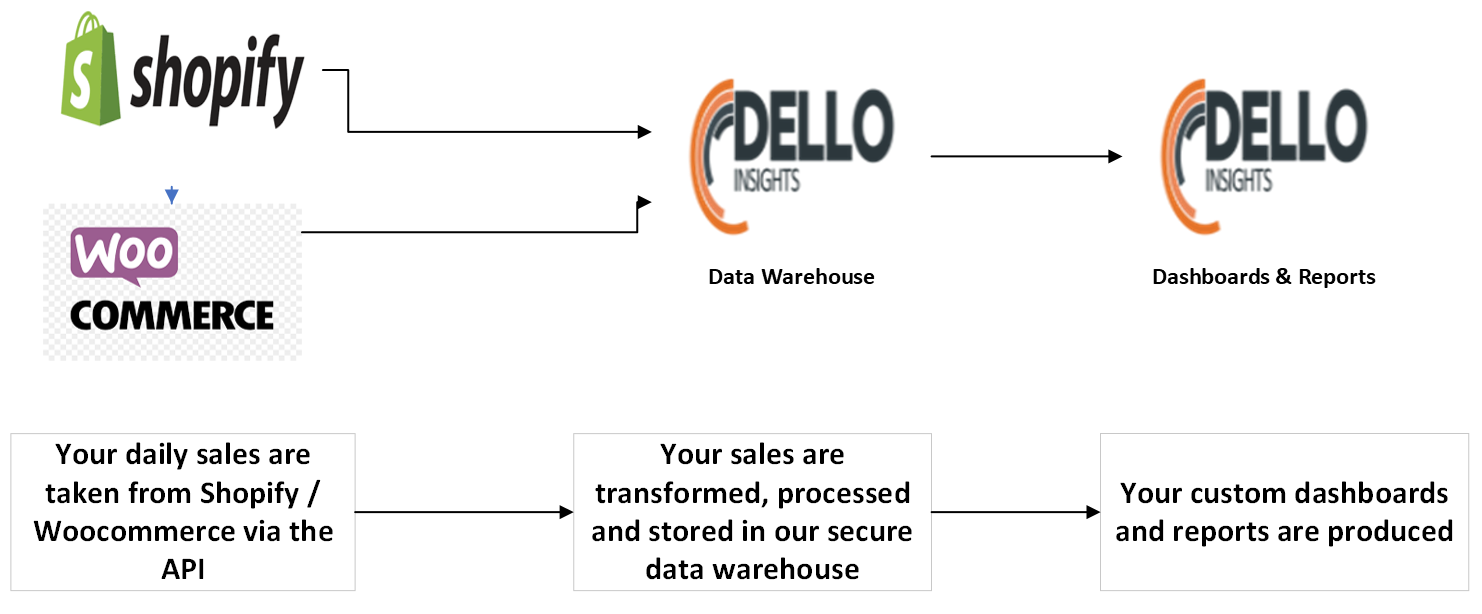The company & it’s mission
Dello Insights’ mission is to help stretched e-commerce businesses to robustly plan sales giving them the confidence to execute their strategy without needing to employ a data analyst.
Working with an e-commerce retailer during the Covid lockdowns, Lucia became frustrated at the limitations of the existing WooCommerce reports in explaining the key components of sales. Researching the market she found a gap in customised sales planning solutions and outsourced data analyst support for SMEs. Combining her data knowledge with Paul’s technical skills she launched Dello Insights in 2021 and they set about building a customisable sales planning service for SME e-commerce retailers.
We like to work with retailers who want to make the world a better place through selling products that improve lives or having BCorp status. We will donate a share of our profits to charities that support the economic empowerment of women.

The people

Lucia
Lucia is the founder, data analyst, SME, and e-commerce specialist.
After graduation, Lucia spent the first part of her career working in retail banking where she worked as a data analyst segmenting customers and informing lending and policy decisions.
Since 2015 Lucia has provided analytics and bookkeeping services for a range of Kent-based SMEs latterly focusing on e-commerce retailers.
Lucia was runner-up Entrepreneur of the year at the 2024 Kent Women in Business Awards and a finalist in two other categories.

Paul
Paul is the website developer and Linux server administrator.
Paul has years of extensive development experience with a range of PHP-based CMS and frameworks including Laravel, WordPress WooCommerce, Magento, and Shopify for large and small clients.
He manages multiple Linux servers running a range of web applications and email systems.
In his free time, Paul is often visiting antique fairs and enjoying his large collection of music.
How it works
Key elements:
Multiple Data Import Options – Data can be imported into our system via quick and simple read-only access to your Shopify or WooCommerce store or a CSV import. No plug-ins required.
First Class Data Security – Best practice applied throughout every stage of the process, registered as data controllers with the ICO.
Outsourced Automated IT – We look after the data collection, processing, and analysis so there is no impact on your existing systems or processes. Our system accepts data via your store’s Shopify or WooCommerce read-only API. or via a CVS file This means there are no plug-ins to install, no alterations need to be made to your server and there is no chance of data being altered on your live shop.
Speedy Implementation – Rapid results as we bring your sales data into our standard template then customise it to your individual business needs.
Behind the scenes:
Step 1: Data is imported to our system via your Shopify or WooCommerce store API on a read-only basis. We do not take in names, telephone numbers, or full addresses and we use a salted and hashed version of customer emails to allow us to match returning customers without ever storing their email addresses.
Step 2: These sales are brought into our secure PostgreSql data warehouse where the sales data is checked, cleaned, and transformed as required into a new set of relational tables. The data warehouse is hosted in the EU with all the software backed up regularly. There is a separate database and user account for each client and strong SSL encryption to protect data in transit. At the end of a project, we delete all the client’s data.
Step 3: The new relational tables are brought into the GoodData dashboards and the reports analysed and used for sales planning. GoodData is ISO-compliant and hosts its data in the EU, there are separate user accounts for each client.





